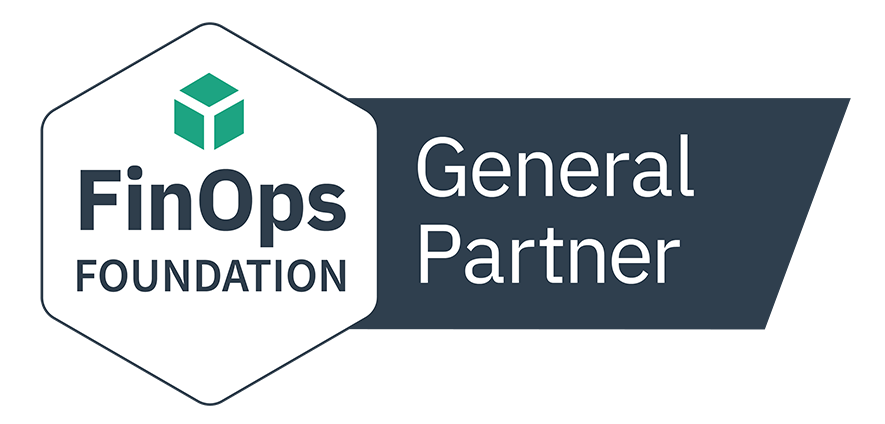Cloud FinOps, Augmented FinOps, or simply FinOps, is rapidly growing in popularity as enterprises sharpen their focus on managing financial operations more effectively. FinOps empowers organizations to track, measure, and optimize their cloud spend with greater visibility and control.
FinOps helps improve operational efficiency by automating numerous financial processes, including billing, budgeting, auditing, and reporting, and it can even help maintain compliance with financial and other third-party regulations. FinOps can also identify cost-saving opportunities by providing insights into usage patterns.
Because of all these capabilities, FinOps is quickly becoming a must-have for any organization looking to maximize profitability while staying on top of its financial operations. This blog covers key FinOps concepts and how organizations can stay ahead of the curve in today’s ever-evolving digital landscape.
What is FinOps?
FinOps is a framework for managing and optimizing cloud spend. Key aspects of an effective FinOps practice include:
- Cost visibility and allocation across departments, teams, or projects
- Budgeting and forecasting based on usage trends and business needs
- Optimization to identify opportunities to reduce costs without sacrificing performance or functionality
- Governance and compliance to ensure that cloud spend aligns with organizational goals, third-party requirements, and best practices
Typically FinOps teams directly work with the IT organization to ensure that cloud resources are used efficiently and cost effectively. This approach helps organizations maximize return on their cloud investments while minimizing risk and unnecessary spending. Teams specializing in FinOps can help organizations stay on top of the latest industry trends, identify areas for improvement and make better cloud decisions—a valuable asset for any cloud-based organization.
What is Augmented FinOps?
Augmented FinOps (a segmentation of Cloud FinOps) is a modern, sophisticated approach to cloud cost optimization and financial operations. It leverages automation, analytics, and machine learning technologies to optimize resource utilization and control over cloud spend. This approach allows teams to identify areas of optimization, set up SLAs, and monitor their progress to reduce costs, improve efficiency, and optimize resource utilization. It also allows organizations to gain better insights into cloud resource usage, forecast future spending, and develop cost optimization strategies.
This automated approach to cloud operations allows organizations to achieve their financial and operational goals while avoiding costly mistakes. It is quickly becoming a key component of any cloud-based organization, and it’s important for organizations to understand Augmented FinOps and develop teams that specialize in it to maximize their cloud investments.
The Role of FinOps in Cloud Resource Optimization
FinOps assists businesses in minimizing expenditure, maximizing savings, and creating resource optimization plans in the cloud by bringing greater collaboration between finance and engineering teams. It also provides visibility into cloud usage trends, costs, and opportunities for resource optimization. This assists cloud users in identifying potential cost savings and reducing overspending.
Cloud FinOps Benchmarking
The goal of benchmarking is to identify best practices, assess performance gaps, and implement improvements to achieve enhanced performance and even a competitive advantage. Benchmarking in a FinOps context is the process of comparing one’s FinOps processes to those of other organizations or industry standards to achieve those goals.
FinOps.org recommends the following steps for effective benchmarking:
-
Resource Utilization & Efficiency. It is essential for FinOps teams to ensure that every resource consumed translates to sufficient business value. The resulting performance and other quality metrics must be economically worthwhile for every expense. To start, FinOps teams should have their sets of business efficiency metrics established and defined.
These metrics should speak to their business and gauge a resource’s efficiency. FinOps teams must be able to attribute a monetary value against costs that can be avoided through rightsizing inefficient or underutilized resources.
-
Measuring Unit Costs. It’s crucial for teams to develop metrics that showcase the business value of every cloud investment. Dedicated FinOps practitioners turn to Cloud Unit Economics, a profit maximization model built on objective measurement standards that assess your organization’s performance against your FinOps and business goals. Commonly used units include:
-
Cloud-only Cost-per-customer
-
Software-as-a-Service (SaaS), License-based Cost-per-customer
-
Cloud + SaaS + Hybrid Costs + Human Capital-based Cost-per-customer
-
- Commitment-Based Discounts. Cloud service providers offer discounts on their services to attract clients and sign them into spending commitments. Notable examples are AWS Savings Plans and Google Committed Use Discounts (CUDs). It’s important to note that every cloud provider has different offerings and unique rules on how they give their discounts. FinOps teams must carefully study each plan and determine how these discount constructs can help them achieve their operational and financial goals.
- Anomaly Management. Anomalies are cloud spends that are unexpected and different from what normal costs incurred. With cloud autoscalers as an example, many FinOps teams find their cloud costs skyrocketing because of the slow nature in which those autoscalers provision their resources. Developers tend to overprovision resources in order for their applications to perform accordingly, leading to resource waste and anomalies in an organization’s cloud bill. A FinOps team that minimizes anomalies needs is an autonomous platform that can schedule resources based on utilization versus allocation in real-time—eliminating errors of manual tuning and ultimately keeping cloud costs under control.
How FinOps Impacts Organizations
FinOps leads to uniform spending decisions through proper monitoring, real-time insights, and granular reports. Businesses that do not have a sound FinOps strategy lack the insights needed to drive well-informed, uniform decisions. This often leads to poor utilization of their cloud resources and suboptimal and costly performance. Managers with a thorough understanding of their resource utilization and its financial implications can develop and implement streamlined practices that achieve operational and financial goals.
This modern approach to operations helps companies shift into a cloud-first culture. More organizations are now moving away from traditional processes and models and investing in cloud resources. However, only a few are mature enough to recognize that this is a cultural shift. FinOps enables organizations to discover, clarify, and implement the most optimal ways to acquire and consume cloud resources. This creates a culture where all parties benefit from optimized and standardized utilization of resources.
Accuracy in forecasting is also crucial to organizations that rely on the cloud. Enterprises with minimal insights into cloud utilization and spending will struggle to control their cloud consumption. Cloud FinOps delivers the data and insights required to implement proactive monitoring, place and execute controls, and provide automated budget alerts. Enterprises will have adequate cloud resources for all their processes while eliminating the risk of under and over-provisioning.
Benchmark FinOps Performance with Pepperdata Capacity Optimizer
To effectively benchmark your FinOps performance and spend, you will need an augmented FinOps tool that goes beyond observability and surface metrics. Pepperdata Capacity Optimizer, a real-time cost optimization software solution for data-intensive workloads, leverages automation and proprietary algorithms to analyze volumes of real-time performance and resource utilization data.
Because it works autonomously in real-time, Capacity Optimizer enables enterprises to achieve instant cost savings through automatic, real-time optimization of Spark workloads on Amazon EMR or EKS. Capacity Optimizer is able to immediately recapture wasted capacity, reduce instance hours, optimize cluster resources, run more applications per job, and reduce the need for manual tuning.
For organizations seeking to boost their FinOps approach, Capacity Optimizer enables FinOps teams to gain visibility into their cloud infrastructure, its processes, consumption, and spending. Dashboard views highlight ongoing savings so that enterprises can easily understand the value that it delivers every day.
This allows them to measure valuable, business-critical KPIs and derive highly actionable insights that slash cloud costs and improve workload efficiency, helping organizations realize these cost savings while meeting SLAs and targeting their business goals.
Read the Capacity Optimizer datasheet to learn more about the solution.




